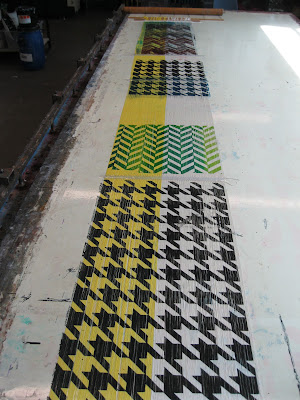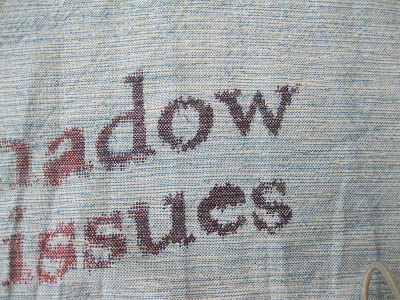We recently decided to try printing the warps with pigment discharge. Warps were dyed and test pastes arrived for sampling. The warps were printed, woven and heat pressed to activate the chemicals. Some of the fabrics and ideas achieved were quite unusual and beautiful.
Examples of Abbotsford pre and post weaving.
After finishing the small warp and feeling excited by the results, I moved onto a larger warp using five different colours. The purpose of this was to create a blanket that could be cut up into samples, it is intended to demonstrate the effects of one ink colour on top of different coloured warps. Various wefts would be introduced to explore change further.
This is the biggest problem I have been faced with, threads sticking to the table and pulling the glue off with them when the warp is rolled back onto the beam. Detangling them before they meet the headles on the loom takes up most of my time when weaving.



.JPG)
.JPG)











.jpg)





































.JPG)

